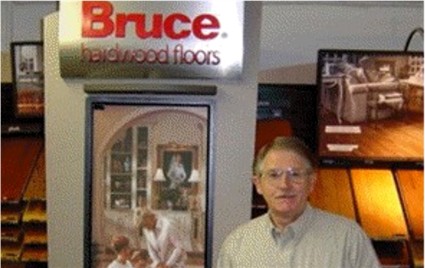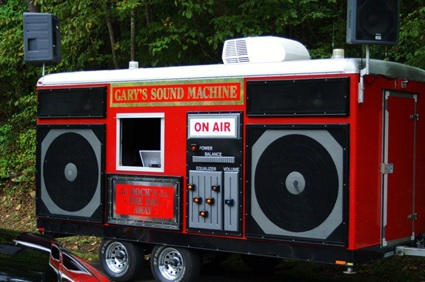On the night of Sept. 13, 2015, telecommunicators at Kentucky State Police Post 1 in Mayfield experienced
an incident they all had trained for, but hoped to never face: the loss of one of their own officers.
The following is an account of how they responded to the challenge.

Left photo: Post 1 Telecommunicators Allyson Tatman (left) and Katie Massey (right). Center photo: Post 1 Communications Shift Supervisor Debbie Craven (left), Communications Supervisor Cammie Beasley (center) and Telecommunicator Alaina Ramage (right). Right photo: Post 1 Telecommunicator Heather Carr (left), Criminal Intelligence Analyst Gary Fraser (center) and Telecommunicator Marie Hart.
“It was kind of busy that night,” recalls Alaina Ramage, one of four dispatchers on duty in the radio room that evening. Fellow dispatchers Allyson Tatman, Katie Massey and Katelyn Shultz were stationed at consoles nearby. Together the foursome handled routine calls as they had many times before.
“Trooper Cameron Ponder was conducting what we all thought would be a normal traffic stop,” remembers Massey. He requested a wrecker and while Tatman was on the phone arranging it, Ponder suddenly called out that he was in pursuit. Shultz immediately started covering other channels and answering phones so the dispatchers working the pursuit could focus their full attention on it.
“As soon as the pursuit was called, we had additional units headed towards him,” says Massey. After a high speed chase, the suspect vehicle blew a tire and came to a stop. Ponder advised dispatch that shots had been fired and he was hit. The suspect fled on foot into a wooded area.
“I received a 911 call from a passerby who had stopped to check on Trooper Ponder believing he had been in a vehicular accident,” Shultz recalls.
Massey remembers talking to a passerby who picked up Ponder’s radio and spoke a very short time. “I tried to keep him talking to me over the radio, but he only keyed up the mic that one time.”
Tatman was talking to the medics to advise them of the location and update them on traffic. “I remember I could feel my heart drop,” says Ramage, “but autopilot took over and started the notification process with supervisors and other agencies.”
Two of those notified were Communications Shift Supervisor Debbie Craven and Communications Supervisor Cammie Beasley. Both arrived at the post within minutes.
Contacted by phone at home, Craven remembers first hearing fast, heavy breathing. “The dispatcher couldn’t catch her breath. I asked what had happened. I knew by her tone it was bad.”
“I don’t recall how long I had been on duty when I learned that Tpr. Ponder had passed,” says Beasley. “I elected not to share it with the rest of the radio room until everyone was off the phone. I wanted to have all eyes on me for a few moments to let them know we still had a job to do.”
With the search for the suspect underway, that job included numerous tasks. Nearby law enforcement agencies were being contacted to help in the search. Additional KSP units were alerted. Teletypes were sent. Non-related, routine calls from the public continued.
“I was in contact with the suspect’s mobile phone provider to get the coordinates of his phone and relaying that information to units on scene,” says Beasley.
As word of the tragedy spread, off-duty dispatchers started to arrive at the post to help including Ashley Gore, Gale Pruett, Heather Carr, Ginger Hunt, Kim Newsome and Marie Hart. “Even if they had not been called, they were coming in,” says Beasley. “As the morning progressed they just began to camp out on the floor.”
“I knew that with a situation of that magnitude, it would be the busiest shift of our career,” says Post 1 Dispatcher Heather Carr, who remembers coordinating radio traffic at the initial scene to land a helicopter from Frankfort on I-24 and running information for detectives.
“Every dispatcher from Post 1 plus some from Post 2 in Madisonville and Post 3 in Bowling Green was there,” remembers Post 1 Dispatcher Gale Pruett, who took turns on the radio and phones.
Post 2 Dispatcher Christopher Rogers arrived at Post 1 to find the radio room very tense, but with every Post 1 dispatcher supporting each other. He assisted by making calls to locate available fueling points for helicopters helping in the search and pulling audio from the incident.
Post 1 Criminal Intelligence Analyst Gary Fraser, a former dispatcher who keeps up his certification, also pitched in that night. “We still had troopers out in the dark with a man armed with a gun,” he explained. “It was all hands on deck. Nobody wanted to go home.”
The eight-hour search for the suspect continued throughout the night. He was located soon after daybreak on Sept. 14. Refusing to drop his weapon, he pointed it toward law enforcement officers and was fatally wounded.
“With the help of the dispatchers, who were executing timely pings on his phone and distributing them to units on the scene, we were able to establish a tight perimeter,” says Capt. Janet Barnett, commander of Post 1. “As much of the search was conducted during the nighttime hours, visibility was an issue. Being able to track the suspect through the pings with dispatch was highly beneficial. These folks worked tirelessly throughout the night. They fielded hundreds of calls, dealt with multiple agencies on the radio and facilitated many different resources to the scene that night including several helicopters and ambulances.”
“They were hurting, like the rest of us. And, like the rest of us, they put that hurt to work taking care of the task at hand,” she adds.
“The four of us in the radio room that night worked as a team. We let our training take over and made sure that everything that needed to be done was,” says Massey. “No one fights alone and that night the four of us stuck together and got the job done until other dispatchers arrived to help with the incident.”
Ramage agrees. “I had three other women in the radio room with me,” she recalls. “I know I could not have done my job without them that night. We worked like a well-oiled machine.”
Shultz is quick to praise the other dispatchers as well. “It was amazing when our other Post 1 dispatchers started to come in,” she says. “Then we had dispatchers from other posts as well. To me, that speaks volumes of just how tight of a bond we all form in this career.”
“We did it as a team and not one of us could have done our job if it wasn’t for the other dispatchers who helped out,” says Tatman.
“I was very proud of every one of them,” says Beasley. “They took care of the task at hand and did so in a professional manner. They showed that, no matter what, they were in it for the long haul. It takes a very special person to be in our line of work.”
Massey explains it like this. “We are the first responder to every situation. We take the call, figure out what is going on and determine who needs to respond. We are not seen by the public and most of them don’t even realize the amount of responsibility we hold. Every decision a dispatcher makes involves someone’s life, whether that be the caller, the person needing assistance or law enforcement units. A dispatcher is a hidden hero.”
.be" mce_href=".be" target="_blank" title="This external link will open in a new window" style="color: #0000cc;" mce_style="color: #0000cc;">.be or visit www.kentuckystatepolice








